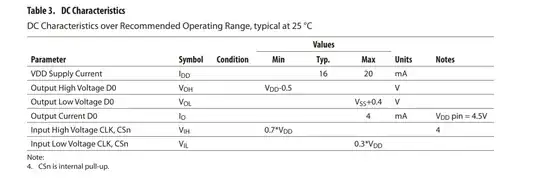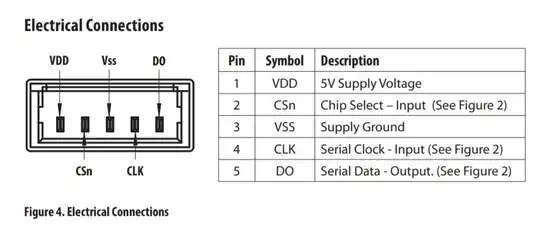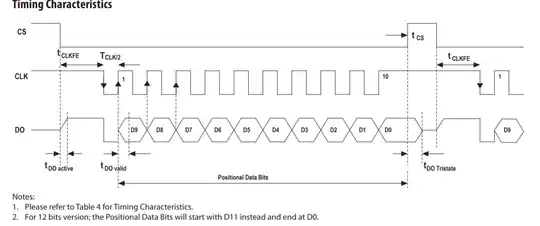I have an AEAT-6010/6012 10/12-bit magnetic absolute encoder and it has the following pin-outs:
Since it is SSI but not SPI I dont use the CSn output and leave it.
I supply 5V to the encoder and clock it between 60kHz up to 100kHz but I dont get any expected data at DO pin. When I observe DO by a scope it is just a very low level clock signal but not any data stream expected.
At one page it is mentioned that CSn is internal pull-up:

And unlike for a typical SSI this encoder also has a timing diagram for CSn:
When I measure CSn, it seems it is always 5V. Am I doing wrong by not using CSn here? Where and how should the CSn pin be connected? I'm really confused the interfacing of this pin and the function of it.

